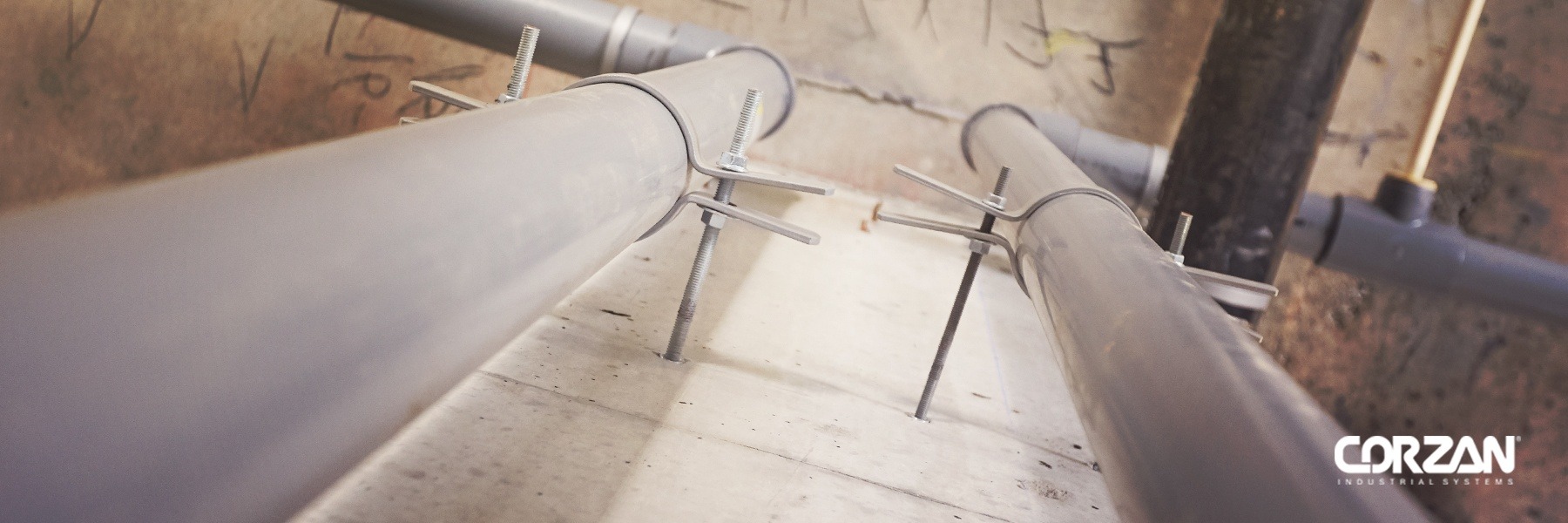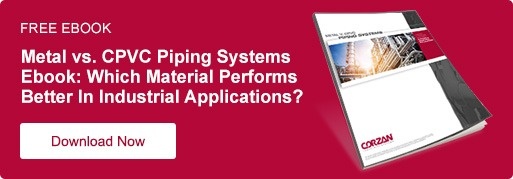Metal v. CPVC Industrial Piping Systems: Onsite Installation Process
Labor and related installation expenses can account for more than half of the total investment made in a piping system. In addition to specifying a material that will withstand the chemical and temperature demands of a process, consideration should be given to the installation process.
Traditionally, engineers have relied on metal for industrial piping systems due to its durability and their familiarity with the material’s strength and weaknesses. The confidence this familiarity provides is used to help justify the extra installation labor and costs associated with a metal system.
At the same time, CPVC (chlorinated polyvinyl chloride) delivers reliability in many similar applications, while also providing a much simpler, faster and less expensive installation. What is it about CPVC that creates these advantages over metal?
Joining CPVC is Much Simpler
The joining method directly impacts labor costs and productivity.
For metal piping installations, welding and mechanical grooving are two commonly used joining methods. Both require skilled technicians and special tools to fuse metal piping seams.
In CPVC piping systems, the material can be joined using flanging, threading or mechanical joining. However, the suggested technique is often solvent cement.
Solvent cement is made up of solvent, CPVC resin, stabilizers and fillers that allow the two CPVC pieces to be fused at the molecular level. The result is a seam that actually becomes the strongest part of the system.
Unlike metal, most of the work for CPVC installations can be done onsite without any pre-fabrication, and by someone with basic training.
For metal piping, specialized welding techniques and highly skilled laborers are required, driving up overall installation time and cost. Without premier welding techniques and equipment, improperly welding seams can ensue. Poor welding causes beads to form around the interior of the pipe, increasing the likelihood of corrosion or scaling.
CPVC Installation Is Safer
Due to the high temperatures and hazardous chemicals used in industrial plants, many areas are classified as high hazard due to flammability concerns.
As mentioned, welding and mechanical grooving are common joining methods for metal piping systems. But open flames and sparks caused by metal-to-metal contact often prevent onsite fabrication in these areas. Highly flammable chemicals can potentially catch fire near an ignition source. To make repairs in flammable-risk areas, the entire area or plant must be shut down.
On the other hand, CPVC installation is much safer. It does not require any ignition source to join the material. Instead, the CPVC uses a quick and easy two-step solvent cement welding process.
Installation and Labor Account for More Than Half the Total Cost
The weight of a metal piping system requires more laborers be involved during handling and installation, as well as the support of heavy machinery to transport and lift metal piping into place.
CPVC is much lighter — 1/6th that of equally sized steel. The weight difference between a 50-ft. piece of Corzan pipe and steel pipe is approximately 1,150 lbs. This means fewer workers, equipment and heavy machinery are needed for CPVC.
CPVC Repairs Minimize Downtime
During the course of any piping system’s life, regular maintenance will be required. This may include layout adjustments or replacing damaged sections.
Due to the inflexible characteristics of metal piping systems, expensive equipment is needed to move the pipe in order for a contracted pipe fitter to repair welds and connections. It also may take time and cost extra to acquire services from expert welders.
However, CPVC pipes and fittings require only basic training for solvent welding. This allows for any trained mechanical contractor or plant maintenance engineer to change, repair and modify the system. Mechanical couplings are another option that can simply and quickly get a system back on.
CPVC piping itself is also more flexible and lighter than steel, so alignment adjustments can be easily made without specialized equipment and machinery.
Comparing Alternative Piping Systems
Want a more in-depth look at the capabilities of CPVC piping systems? Download our Metal V. CPVC Piping Systems Ebook to learn how the material performs within industrial environments when compared to metal alternatives.


